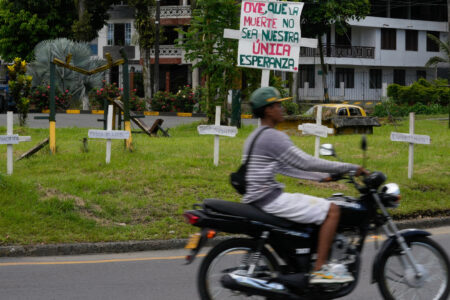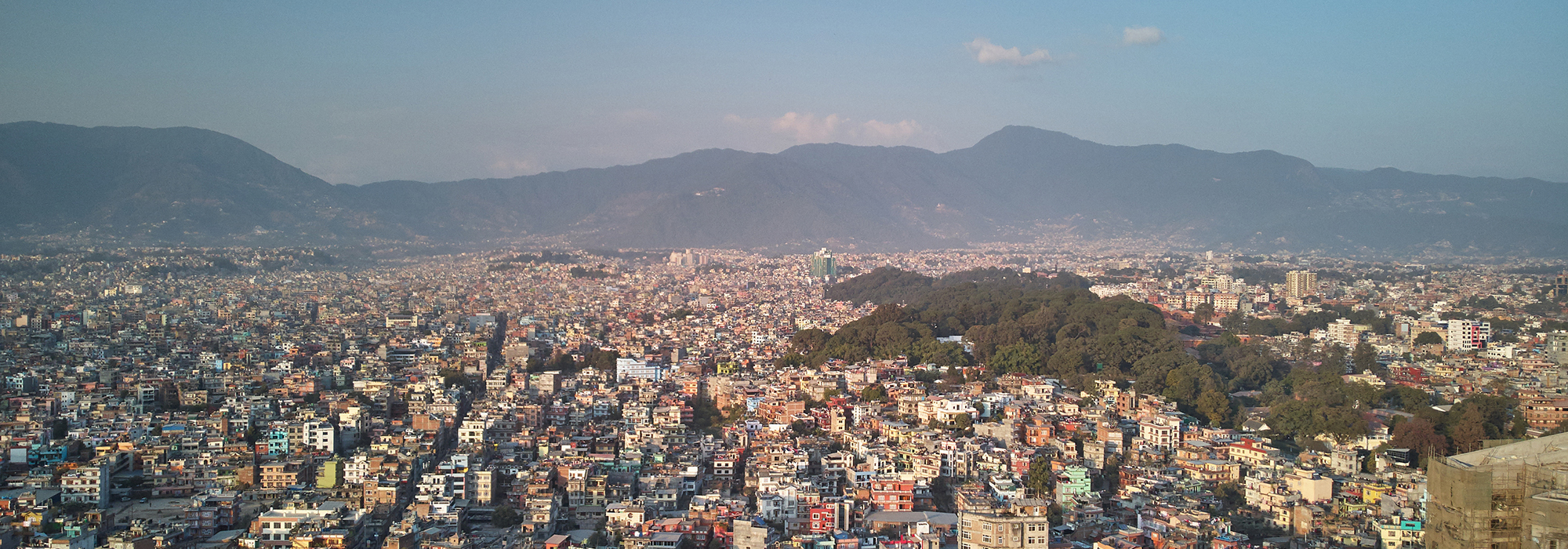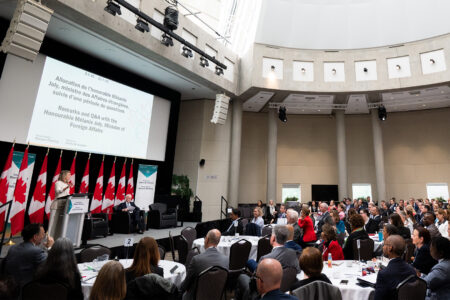
Canada’s international development spending is not as generous as we might think, especially when compared with spending by other advanced economies. Proponents of increasing our official development assistance (ODA) point to a widely accepted metric — the ratio of ODA to gross national income (GNI) — to highlight what they see as the Canadian government’s failure to spend enough on poor countries.
But these same commentators overlook some basic questions. What would an actual spending increase in ODA mean for the pocketbooks of Canadians? And does the way we measure Canadian aid generosity make sense?
Targets for international assistance
In 1958, the World Council of Churches suggested that 1 percent of an “economically more developed” country’s national income should go to averting human disasters. The council provided no explanation for how the 1 percent target was calculated, but experts have observed that it was roughly double the size of capital flows — money for investment moving from one country to another — during the 1950s. Estimates from leading development economists found the 1 percent to be a good estimate of the capital requirements of developing countries at the time, and statements by the United Nations offered political credence to the claim.
This initial target was based on public and private capital flows, flows over which governments did not have total control. A new type of target, one that governments could actually budget for, was proposed in 1969 by a commission set up by the World Bank and led by former Canadian prime minister Lester Pearson. The Pearson Commission suggested that donor countries spend the equivalent of 0.7 percent of their gross national product (GNP) on ODA by 1980. The target was included in a 1970 UN resolution, but no government ever agreed in a public UN forum to reach it, though some countries made public pledges to move toward it.
In 1993, GNP was replaced in the calculation by gross national income (GNI). The most recent widespread commitments to the target came in 2005, when 15 European Union member countries committed to reaching the 0.7 percent ODA/GNI target by 2015.
The OECD’s Development Assistance Committee (DAC), an international forum of major donor countries that defines and monitors global standards in key areas of development, encourages member countries to meet the 0.7 percent target, but very few countries do. The OECD’s most recent data shows the equivalent of 0.31 percent of the DAC donors’ combined GNI went to ODA in 2018; for Canada, ODA levels were 0.28 percent of GNI. Only 5 of the 30 DAC members exceeded the 0.7 percent target (Denmark, Luxembourg, Norway, Sweden and the United Kingdom).
Flaws with the ODA/GNI ratio
The main advantage of the 0.7 percent target is that it provides a quick way to compare spending between donor countries. However, it has serious flaws.
First, the 0.7 percent target was created as a lobbying tool and is based on out-of-date economic assumptions. It is a holdover from a calculation made 50 years ago. Aid targets should have some basis in the needs of developing countries, but the current 0.7 percent target is utterly divorced from needs. If every DAC donor reached the target, would all developing countries have their investment needs met? Likely not. Determining the right amount of aid to support developing countries is a multi-faceted undertaking that involves aid effectiveness, proper instruments, sequencing of financial flows and other specifics that are largely ignored by those advocating for the blunt 0.7 percent target.
Second, ODA/GNI does not necessarily measure government generosity. GNI is shorthand for a country’s wealth, but it does not indicate how much of the national income is transferred into government coffers for governments to redirect to international development and other purposes. In 2018, the International Monetary Fund estimated that general government revenue in Canada was 40 percent of its GDP (a similar metric to GNI); for Norway, it was 55 percent. Canada redirected 0.67 percent of 2018 government revenue to ODA; Norway redirected 1.8 percent. While Canada’s economy is almost four times larger than Norway’s, the amount taken in by the Canadian government is only three times larger than Norway’s government revenue, and Canada must service a population that is seven times larger than Norway’s. So while Canada looks to be a laggard in foreign aid when compared with countries such as Norway — Canada’s ODA/GNI figure puts us 15th among the 30 DAC donors, and Norway is generally in the top three — there are important differences among the economies and taxation policies of DAC donors that must not be ignored in evaluating ODA spending.
Should Canadians spend more on ODA?
Should Canada’s government be spending more or less than 67 cents of every $100 it takes in on ODA? In the context of, say, national defence, where the government spends $8 of every $100, is the ODA figure equitable? There is no right answer; it is for each taxpayer, and voter, to decide. However, the issue would be easier for people to understand if the expenditure is looked at from an individual taxpayer’s or worker’s perspective.
We have calculated that for 2018, approximately $241 of the average working-age Canadian’s taxes was spent on ODA. This translates to about 0.38 percent of the average Canadian salary. For comparison, we found that the average Norwegian spends 2.4 percent of their salary on ODA, and for the average Swede, it is 2.1 percent. If Canada’s ODA had reached the vaunted 0.7 percent level in 2018, the tab for each working-age Canadian would have hit $647.
Are the politicians and development practitioners who want Canada to be at the 0.7 percent ODA/GNI level willing to tell every working-age Canadian to come up with an extra $406, and more as GNI goes up? Supporters of an ODA increase point to a 2019 survey reporting that 41 percent of respondents felt Canada should boost its aid to developing countries. While this result is a positive signal, the survey did not say by how much these respondents were willing to increase aid — a key insight that would be needed to move the discussion forward.
To increase ODA, the Canadian government could shift priorities and spend less somewhere else, or it could simply run higher deficits. The last election seemed to highlight a waning enthusiasm for fiscal responsibility, so perhaps higher ODA levels via deficit spending is the way to go. A former prime minister who struggled to get Canada’s national debt under control would have Canadians believe that current aid levels are embarrassing. But, at some point, the bill has to be paid from government revenues, meaning taxes. hose advocating for such increases would have a stronger claim to the moral high ground if they were honest about this fact. Let us talk not of the generosity of the government but of the generosity of every Canadian, present and future, and their willingness to do more toward international development.
Next steps
People advocating for higher levels of ODA seem untethered to fiscal realities. Even if we assume that there is a linear relationship between the total spent on ODA and the impact that ODA can have, there needs to be a reckoning with what an ODA increase means for taxpayers. The simple fact that one of the country’s party leaders felt emboldened to propose an ODA cut in the recent election campaign should serve as a warning that spending on ODA needs to be explained to Canadians in terms they can apply to their own lives and their own pocketbooks.
Advocates for higher ODA should employ better metrics. A per-person measure of the Canadian government’s ODA expenditures would be a step in the right direction, but stating the amount of ODA as a percentage of the federal budget would also be useful in clarifying what generosity actually means. Then Canada’s generosity needs to be compared with that of other donors but also, more importantly, framed in the context of the needs that ODA is intended to address. We have better metrics and data to calculate development needs than ever before, and these metrics can provide far more insight into how ODA fits into each country’s development plan.
Why are we still using a blunt 50-year-old tool to calculate how much our government should be spending on ODA? In our experience, development work has become a highly nuanced enterprise that considers inequality within developing countries, whether ODA is reaching the poorest people, the gender implications of certain development projects and other factors. Let us bring that same desire for nuance to the discussion of how we pay for international development.
Photo: Aerial view of Kathmandu, Nepal. Shutterstock, by Maksim Semin
Do you have something to say about the article you just read? Be part of the Policy Options discussion, and send in your own submission. Here is a link on how to do it. | Souhaitez-vous réagir à cet article ? Joignez-vous aux débats d’Options politiques et soumettez-nous votre texte en suivant ces directives.










